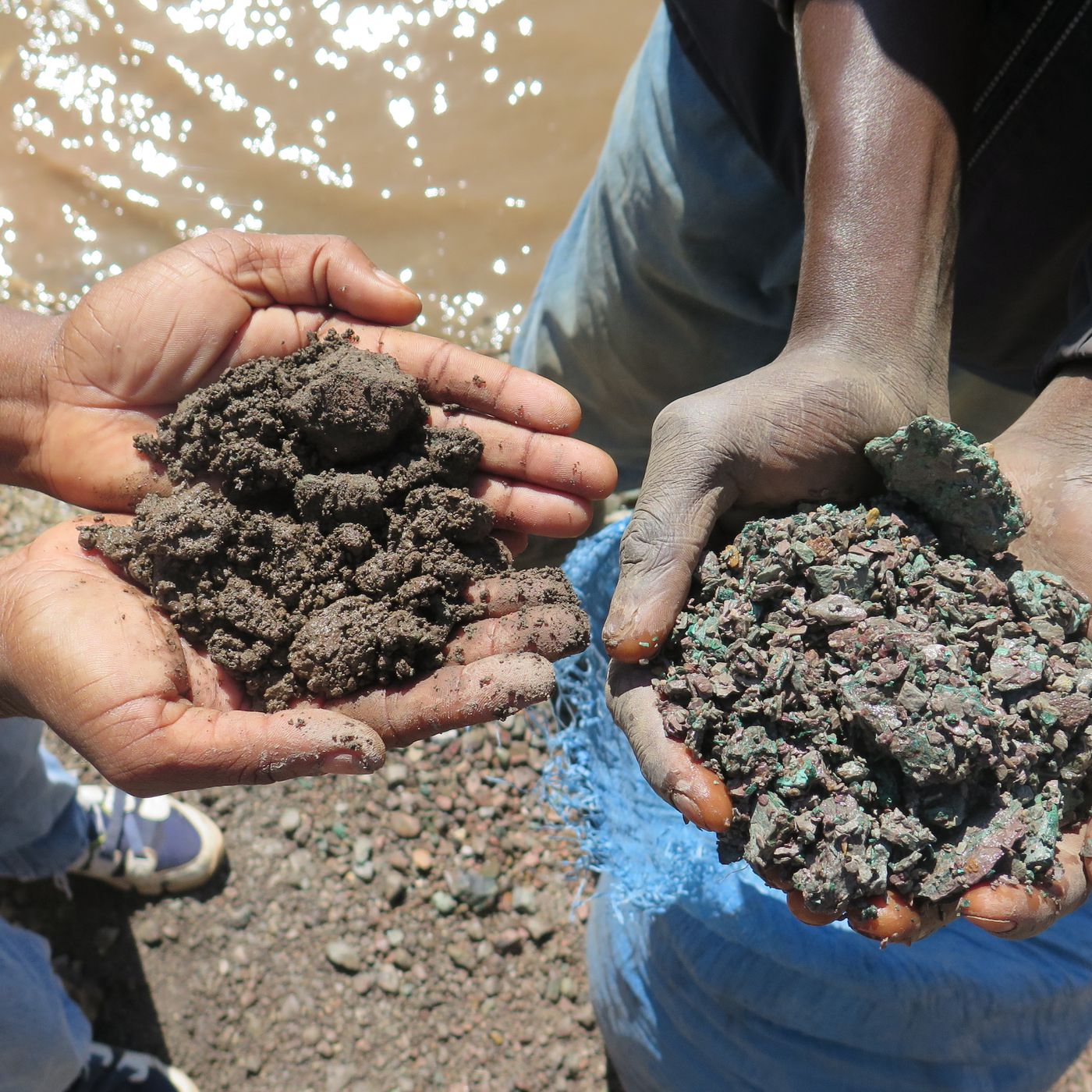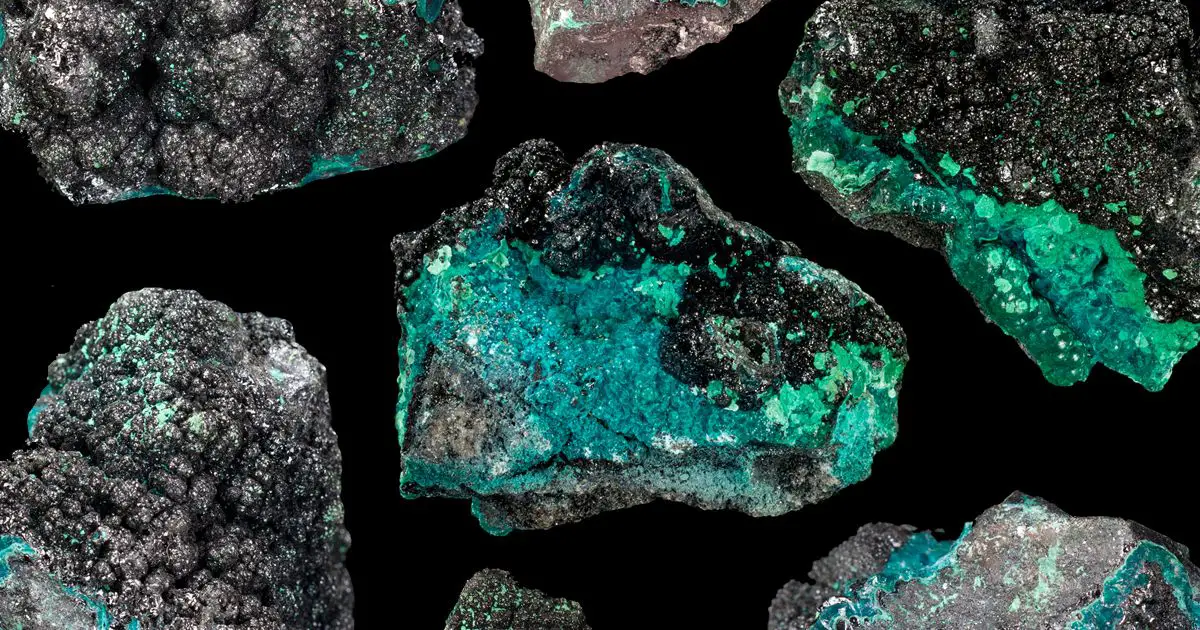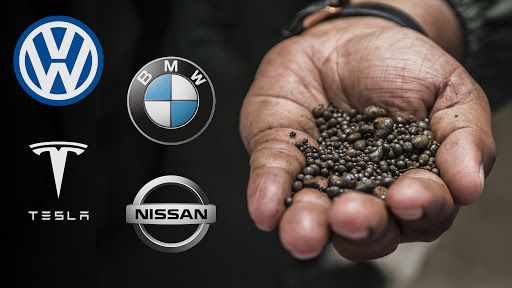Electric Vehicle materials and poverty
Cobalt is one of the main material that is needed to manufacture electric car battery. It is mainly found in Democratic Republic of Congo popularly known as DRC.


Cobalt is one of the main materials that is needed to manufacture electric car batteries. It is mainly found in Democratic Republic of Congo popularly known as DRC. Despite being Africa’s biggest copper producer and the world’s leading source of cobalt with up to $10 billion worth of those minerals mined and sold abroad, an investigation by Global Witness, the anti-corruption charity, shows that as little as 6% of DR Congo’s annual mining exports reach the national budget.
Cobalt is used for lithium-ion batteries found in cell phones, laptops, and electric cars. EV batteries require 15,000 grams worth of lithium-ion. It is the most expensive material in the new batteries this means cheap labor leading to exploitation of children.
Cobalt is essential to power the rechargeable lithium batteries used in millions of products sold by Apple, Google, Dell, Microsoft, and Tesla every year. The huge demand for cobalt is a result of cheap handheld mobile technology over the past years and is expected to double. More than 60% of cobalt originates in DRC, one of the poorest and most unstable countries in the world.
The mineral is mainly mined and purchased by Chinese firms found in DRC and sold to technological manufacturers such as Tesla, Apple, Microsoft among others. The American law requires companies to first verify where the minerals originate in DRC because cobalt is not one of the named conflict minerals and thus exempt from this law.
For many years human rights groups have been documenting the issues related to mining, 15-30 percent of the cobalt is done by Small-Scale Mining (ASM). The human right risk is high in artisanal mines in the DRC, a country weakened by violent ethnic conflict, Ebola, and high levels of corruption. Child labor, fatal accidents, and violent clashes between artisanal miners and security personnel of large mining firms are recurrent.

Many ASMs can not be shut down because a majority of Congolese live in extreme poverty. Cutting ASM out of the cobalt supply chain is neither feasible, due to the interwoven nature of the cobalt supply chain, nor desirable from a development perspective. Instead, companies committed to setting up responsible cobalt sourcing practices need to take responsibility for addressing the human rights violations that taint the DRC’s ASM sector.
To improve consumer confidence that cobalt from the DRC is not mined by children or in unsafe conditions, the mining industry needs to formalize its approach to these ASM sites. This requires a recognition that ASM will continue, that industry human rights standards will need to be put in place and that those on the ground will need to have the capacity to monitor compliance with those standards. The DRC government has adopted a mining code and has already begun to assign pieces of land specifically for ASM. But full implementation of ASM formalization at scale will also require the support of private companies. These are enormously complex undertakings, but we can learn from several existing ASM formalization pilot projects and build these models to scale while also beginning to address the root causes for systemic human rights challenges in the DRC, such as child labor.
Several leading companies are beginning to support common standards for ASM formalization. Working in a multi-stakeholder setting with key actors along the supply chain, globally, and in the DRC, including the government, cooperatives and concession holders, civil society organizations, workers, and manufacturing and end-user companies will be key to developing systems that promote responsible cobalt production and trade practices.
The increasing world demand for battery minerals presents a unique opportunity to develop a model for responsible ASM cobalt. The benefits from the cobalt model could apply to the estimated 40 million artisanal miners around the world that work on extracting different minerals for a living. Solutions need to be put in place before the electric vehicle boom takes off. The time for action is now.

The world’s largest cobalt-producing countries
World's largest cobalt-producing resources help to cut down carbon emission through electrification. The silvery-blue metal is used in manufacturing many types of electronics mostly the fast-growing fleet of electric vehicles. Cobalt was discovered in 1739 by Swedish chemist and mineralogist Georg Brandt, and derives its name from the German word “kobald”, meaning goblin. According to data from the US Geological Survey (USGS), around 140,000 metric tonnes of cobalt were produced worldwide during 2019, more than 70% of which came from a single country, the Democratic Republic of Congo (DRC) in Central Africa.
Cobalt is commonly mined as a by-product of copper or nickel, although small-scale artisanal mining has become an increasingly common method of extraction, particularly in the DRC. Globally, there are an estimated seven million tonnes of measured cobalt reserves, more than half of which are based in the African country.
- Democratic Republic of Congo – 100,000 tonnes
Congo accounted for more than 70% of the world’s entire cobalt production in 2019, totaling around 100,000 tonnes.
Many of the world’s largest mining companies have set up operations in the country as they seek to secure supplies of this increasingly sought-after commodity.
The Katanga Province is a particularly productive region, home to some of the world’s biggest cobalt mines including Mutanda, Kamoto, Etoile, and Ruashi.
However, a significant artisanal mining sector has also bloomed in recent years, buoyed by growing demand for metal. A report from the World Economic Forum estimates small-scale mining accounts for 15%-30% of all cobalt production in the DRC.
There have been several examples of dangerous working conditions, human rights abuses including child labor, and environmental damage associated with Congolese cobalt – prompting many major companies who rely on the country’s supply chains to form initiatives aimed at promoting higher ethical standards.
2. Russia – 6,100 tonnes
Russia is the second after DRC, producing 6,100 tonnes of cobalt in 2019, around 4% of the global share. Mining activity in the country, which has an estimated 250,000 tonnes of cobalt reserves, is mainly concentrated in the Altai Republic area.
The region is home to the Karakul deposit, which is considered one of the largest cobalt resources in Russia and has spawned several close operations nearby, Kuruozek, Yantau, Toshtuozek, and Olendzhular.
Diversified Russian miner Norilsk Nickel (or Nornickel) is the country’s top producer. Gulinskoye Nickel-Cobalt Project, Norilsk-1 Project, Maslovskoe Project, and Kingashsky Project are other Russian ventures that have reached the exploration stage.
The country is reported to be seeking to boost its cobalt production capacity over the coming years and has explored the future possibility for deep-sea mining to retrieve cobalt deposits in the Western Pacific Ocean.
3. Australia – 5,100 tonnes
Third on the list of largest cobalt-producing countries is Australia, which increased its output in 2019 to 5,100 tonnes, up from 4,880 tonnes in 2018.
The country accounts for around 3.6% of global production, but with known reserves totaling 1.2 million tonnes according to the USGS – second-only to the DRC – it is well-positioned to sustain higher levels of output in the coming years if the investment is forthcoming.
In 2020, the Australian government launched a Critical Minerals Facilitation Office, designed to promote mining industries like cobalt, and recently published a report highlighting a significant project pipeline for the metal that is likely to support future production growth.
Glencore’s Murrin-Murrin mine located in the north-eastern Goldfields region of Western Australia is currently the single-largest cobalt operation in the country.
4. Philippines – 4,600 tonnes
The Philippines produced 4,600 tonnes of cobalt in 2019, the same level as the previous year and accounting for around 3.3% of the global share.
The country has the world’s fourth-largest known cobalt reserves, totaling 260,000 tonnes.
Major cobalt operations in the Philippines include the Adlay-Cagdianao-Tandawa Project owned by CTP Construction and Mining and the Agata DSO open-cut project located in Tubay, Agusan del Norte.
Other major cobalt mines in the country include the Coral Bay Project in Bataraza, and the Palawan and Santa Cruz cobalt-nickel projects in Santa Cruz, Zambales.
Zambales Project, Alpha Project, Botolan Project, and Agata North Project are four cobalt projects currently in the exploration stage, while the Mindoro and Acoje ventures are in the feasibility stage.
5. Cuba – 3,500 tonnes
The island of Cuba ranks fifth on the list of the world’s top cobalt-producing countries – accounting for 2.5% of the global share with the production of 3,500 tonnes in 2019.
The country has the third-largest known reserves of the metal, measured at 500,000 tonnes, the majority of which are located in the Moa region to the east of the country and are extracted alongside nickel mining operations.
A joint venture between Canadian miner Sherritt International and General Nickel Company of Cuba produces the metal via open-pit mining at deposits in the Moa region, which are transported to Canada to be refined at a facility in Fort Saskatchewan, Alberta.
6. Madagascar – 3,300 tonnes
Madagascar produced 3,300 tonnes of cobalt in 2019, around 2.4% of the world's total.
The small island nation, located in the Indian Ocean off the coast of East Africa, is home to 120,000 tonnes of cobalt reserves.
Mining in the country largely centers around the $8bn Ambatovy nickel and cobalt project – a partnership between Japanese trading company Sumitomo and Korea Resources.
The Ambatovy project is the largest foreign investment in Madagascar and has made nickel and cobalt important exports for the country. Ore is extracted from two deposits, known as Ambatovy and Analamay, and transported to a refining facility 220km away via a slurry pipe.
7. Papua New Guinea – 3,100 tonnes
Papua New Guinea in the south-western Pacific produced 2.2% of global cobalt supply in 2019, measured at around 3,100 tonnes.
The country holds a relatively small share of global reserves, with an estimated 56,000 tonnes of metal.
The Ramu nickel and cobalt operation in Madang Province – a joint venture between Metallurgical Corporation of China and Canada’s Nickel 28 (formerly known as Conic Metals) – is a major source of activity in the country.
Another nickel/cobalt project in Papua New Guinea, known as Mambare, is in the early stages of approval.
8. Canada – 3,000 tonnes
Canada’s cobalt production declined by almost 15% in 2019 to a total of 3,000 tonnes.
Despite ranking eighth on the list of the biggest cobalt-producing countries, it is home to significant reserves, measured at 230,000 tonnes – indicating the potential for further mining activity.
Majors Glencore and Vale both operate significant projects in the country, including the Voisey’s Bay, Raglan, Thompson, and Fraser mines.
Sources:
i) Annie. K (2019) Apple and Google named in US lawsuit over Congolese child cobalt mining deaths
ii) John. C (2020) Why Cobalt Mining in the DRC Needs Urgent Attention




